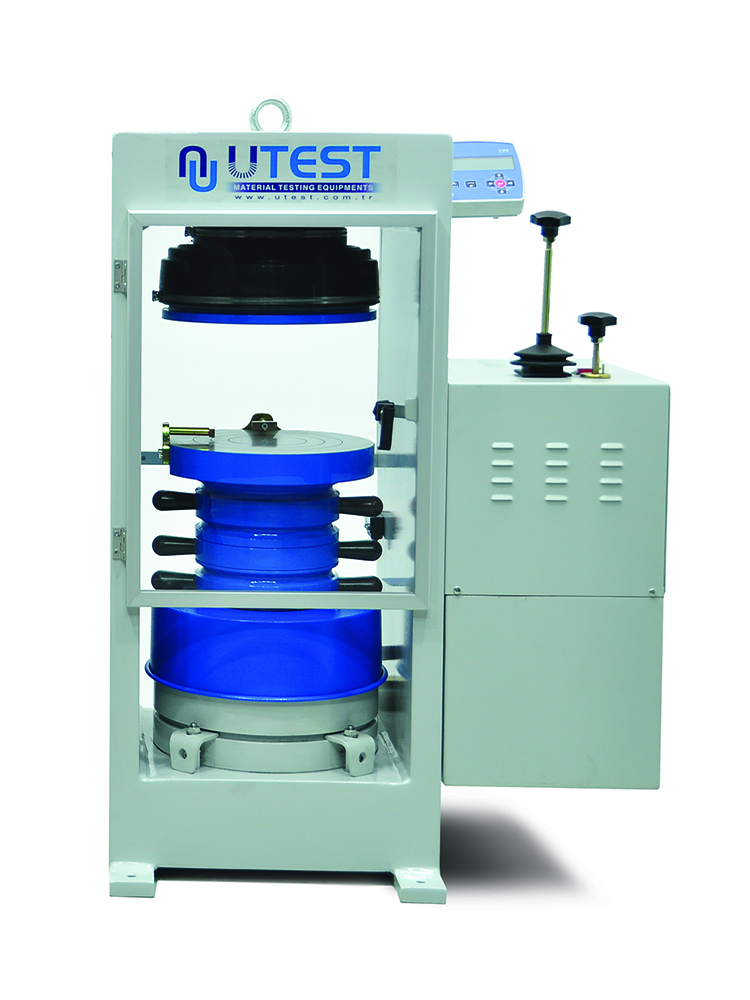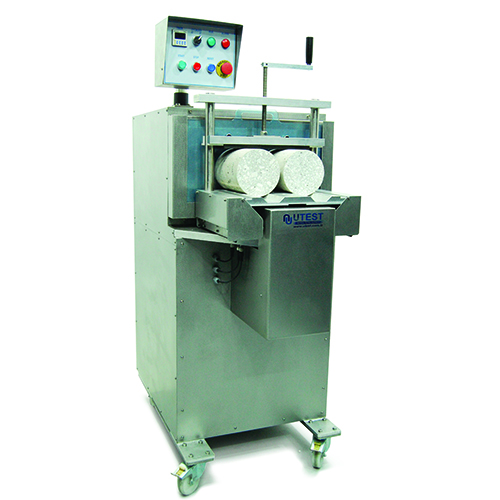Lab News April - June 2019
Blog: Selecting the Correct Compression Machine 
There are a number of considerations when purchasing a new compression machine to crush concrete cylinders and cores. Here are a few things to watch out for:
Frame
Capacity
The capacity of a compression machine is altered when the diameter of the hydraulic ram is increased or decreased. A larger diameter will allow the machine to apply a larger force. Our range of frames have a capacities of 600kN, 1500kN, 2MN, 3MN, or 4MN. There are a few things to note:
- Larger capacity frames will be slower to move and slower to test. It is good to have excess capacity but it may not fulfil the requirements of your workflow.
- Most of our machines are sold with a 2MN capacity. This means that over 250MPa can be achieved with a 100mm diameter cylinder. Considering most concrete is in the range of 20-60MPa this is plenty of capacity. However this changes where the specimen size increases.
- Higher capacity frames need harder platens. Additionally standards governing these frames mean external testing must be completed to prove the hardness of the platens. Generally this just means it takes longer to get your hands on a new machine.
Frame Type
There are two main frame types. We call them welded or 4-column. Welded frames are not as stiff and are found on our lower capacity systems. The 4 column frames are a lot stiffer and generally only used over the 2-4 MN capacity range. The 4-column frame is considered a better quality frame and is more expensive but the welded frame is suited to most concrete labs. One thing to note is that the 4-column frames are a lot heavier. A lot of the time over 2 Ton which, a maximum capacity of common forklifts. Getting these into place involves more logistical planning.
Powerpack
Power pack type
There are 4 main types of power packs:
- Manual power pack- these require no power. The machine is hand cranked by the operator. The rate of the test is determined by the pace that you crank the handle. Because they are not powered, they also don’t have many data logging features. A manual power pack is fine for remote sites but would not be the first choice in a urban setting where usage will be moderate to high.
- Semi-automatic power pack- this system is controlled by the use of a lever to adjust the speed at which the ram moves up and down, and the rate of load application. There would need to be power, so the test is less manually intensive. However the control of the rate is still manual and so the machine must be manned for the duration of the test with a careful operator. Additionally the results are manually recorded by the user.
- Automatic power pack- this system can be programmed to carry out the test at the required rate and then left to run its course. Most lab use this type of power pack as it allows the technician to carry out other activities while the test is in action. They have a dual stage hydraulic pump which allow the platens to be move quickly to bring the sample into contact with both platens.
- Servo-controlled power packs- unlike the automatic system (which uses a hydraulic pump and PID controls) the Servo controller uses a servo valve adjust the flow of oil to control the rate. This has several advantages:
- The precision of the system and the control is of a much higher level, both more precise and with a quicker response to changes
- It can be displacement or load rate controlled
- It can be programmed to vary the rate over a period and in complex sequences. This is important in the case of determining Youngs Modulus, in which rather than testing the peak UCS the sample undergoes during a cycle of loading and unloading.
Channels
The first 3 types of power packs (Manual, Semi-auto and Auto) have one hydraulic pump connected to one frame. You can add another frame but your need to manually switch the pump to the other frame using a tap. The servo controller can come in 2 or 4 channel configurations, and in those the frame is chosen in the user interface. This allows a lab to have multiple frames running from the same power pack as long as they aren’t running at the same time.
Accessories
Some additional accessories may be required by the user where they are not using the compression machines for standard samples or they are performing a test requiring more than just the UCS.
Testing Bricks and Pavers
Bricks are generally not tested as standard cylinders, they may be tested in their deliverable form, such as a larger flat paver. In that case the platens must be very large and are generally rectangular. Changing the platens where the machine is used for multiple uses mean that additional lifting attachments may be required to allow the platens to be swapped safely and quickly.
Extensometer Frames
Extensometer frames (compressometers) can be used to measure the change in dimensions of the sample during testing. There are a number of options in terms of the number of dimensions measured (generally 3 but sometimes 2) and the precision of the sensors used to measure it. Most compressometers will have automated sensors with sub millimetre resolution.
Precision
It is generally misunderstood how a compression machines measures force. Rather than using a load cell in most cases a hydraulic pressure sensor is used. Adjusting the precision of measurement requires this transducer to be changed for a more capable sensor. We can do this to most of our machines. Additionally this means that the machine must be calibrated in place as the sensors can be affected by being transported unlike a load cell which can be calibrated off site.
Product Focus: Upkeep on an Autogrinder 
The grinder is fairly simple to be maintained, a few critical points to keep in mind:
- The inflow water needs to be clean and free of any particles, concrete or similar debris. There is a filter in the inflow tap, it needs to be checked and cleaned regularly in case dirt finds its way in. This usually happens when the input water is recirculated and not filtered enough. This can clog the tap preventing it from further flow in the water system. Pay particular attention to concrete dust in the input water, dust can pass through the filter. The output nozzles are small and that concrete dust dried can fully block them and cause the output water line to fail.
- After every operation it is always a good idea to plug off the machine from the power outlet and clean the area where grinding happens including the grinding wheel. A spray or hose with just a little pressure can be used with a brush. Please don’t spray directly towards the wheel or behind it especially with high pressure as the water can go beyond the protective white plate, behind the grinding wheel and enter inside where all the electronics and the motors are. This can cause serious damage to the machine. Please be careful not to put any water on the top controller head or the top of the machine.
- The threading on the cylinder holding handle can be greased up if necessary.
- Always operate the machine with the back door closed to prevent injury and dust and water getting inside.
- If the grinding wheel is worn off or used for a long time it should be replaced. Dull wheel puts additional strain and pressure on the machine which can cause overheating and some parts to fail.
- To prolong the grinder’s life give it a cool down time of about 15-30 min every couple of hours especially in extended usage.


